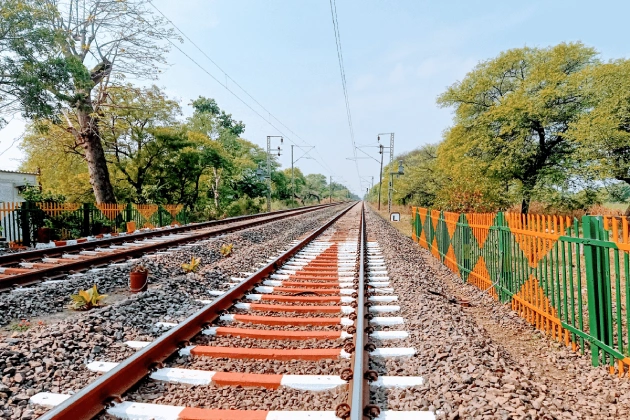The Indian railways recently completed the survey for the feasibility of a railway line connecting Kokrajhar in Assam, India, to Gelephu in Bhutan. During the Bhutanese King Jigme Khesar Namgyel Wangchuck’s visit to India, both the countries engaged in talks where they sought to prioritise enhancing connectivity between the two countries, mainly by expediting the completion of the above mentioned rail link. The first stage of the primary engineering work is reportedly complete and there all already talks to connect other regions through the railway network, such as Samtse, Phuentsholing, Nganglam and Samdrupjongkhar.
This news comes amidst the BBIN (Bangladesh, Bhutan, India and Nepal) countries’ renewed interest in using transnational railway networks as an important tool of regional integration in the sub-region. The pre-requisite to economic development anywhere is good connectivity and the BBIN countries have sought to, over the years build a trans-regional communication and transportation infrastructure. The most significant part of this infrastructure is the building and in some case resuscitation of railway networks between the BBIN countries.
Railways networks connecting South Asian countries is not a new phenomenon since there were many railway routes connecting India and Bangladesh since colonial times. The renewed interest in railways can further, also be attributed to the fact that railways are the most climate-efficient option for the movement of goods and people over long distances. It would lead to reduced carbon emissions for the BBIN countries and therefore the entire sub-region.
Apart from Bhutan, the other 3 countries are connected to each other by at least one railway line and the railways have good connectivity with ports facilitating trade in and through the sub-region. Bhutan, where roadways have been the main mode of transportation, does not have an operational rail network, but has been for some time considering developing a railway network for greater connectivity within the country as well as with its neighbouring BBIN countries. In fact it also signed a MoU with India in 2005 to develop, and set up five railway lines connecting both the countries.
That plan however did not come to fruition all these years, until now. India’s decision to proceed with the much delayed railway connectivity project with Bhutan, comes at a time when Chinese presence along the Line of Actual Control has been increasing steadily. In such a climate, this railway link could be instrumental in enabling India to secure its borders against China.
The first ever passenger rail link between Jaynagar, India and Kurtha in Nepal too was inaugurated only last year. The only other railway line is between Raxual (India) to Sirsiya (Nepal), but is mainly used for freight movement. Nepal, like Bhutan is a landlocked country and has much to gain through the development of railway connectivity.
On the second day of Rt. Hon. PM Sher Bahadur Deuba’s official India visit, the two countries have had an exchange of agreement on the operationalization of the 35 km long cross-border rail link between Jayanagar in Bihar and Kurtha in Nepal (1/2). pic.twitter.com/22S8ZiRmvK
— PMO Nepal (@PM_nepal_) April 2, 2022
It could lead to the relaxation of roadway traffic in these countries and reduce trade dependency on roadways. Further, access to low-cost railway services would also help both the countries to trade in resources and products that are not feasible to be transported through roadways. Nepal also has plans to develop a 1024km long East-west corridor that would connect, through a rail network, 24 districts spanning the entire length of Nepal, from Kakarvitta, in Jhapa district to Mahendranagar, in Kanchapur district. This project is expected to produce big economic returns for Nepal, by generating employment and enabling simple and cost effective movement of people and goods across Nepal.
There are currently, five operational railway links between India and Bangladesh and the most recent one to be resuscitated is the Haldibari (West Bengal) to Chilahati line, which had stopped being in operation since 1965. This line is expected to increase railway access to main ports and dry ports in order to bring about economic development and social upliftment of the entire region, including Assam.
Great To See After 55 Years The Historic Chilahati – Haldibari Railway Line Opened In Presence Of PM Of Both Country Virtually. Almost 50 Thousand People Were Present Across Border To Witness It. Many Elders Remembered How 55 Years Ago They Used To Travel Via This Route. 👏 pic.twitter.com/JftwMeUswl
— বাংলার ছেলে 🇧🇩 (@iSoumikSaheb) December 19, 2020
Further, it is expected to better connect this region to the rest of the country through the Siliguri Corridor. The other rail lines, used variously for passenger and freight travel, are, The Petrapole-Benapole line- through which, an estimated 70% of the trade between India and Bangladesh takes place; The Gede-Darshana line, which falls within the proposed route of the Trans-Asian Railways and could help connect North-East India to South-East Asia; the Singhabad-Rohanpur line and The Radhikapur-Birol line.
Khulna-Darshana rly line link project was announced 2 upgrade d existing (doubling of BG) infra, linking d current cross-border rail link at Gede-Darshana 2 Khulna, augmenting d rail links b/w d 2 countries, esp. 2 Dhaka, but also in future, 2 Mongla Port.https://t.co/IzXlQpqeYK
— Saikripa (@saikripa_jpd) September 9, 2022
Furthermore, the recently constructed Padma Multipurpose Bridge in Bangladesh is also expected to strengthen the physical connectivity between the two countries.
The four states making up BBIN, with their geographically contiguous borders and cultural links rooted in a common past and a long history of intra-regional trade and people to people connections, together form a South Asian Growth Quadrangle. Due to the interdependent nature of these states in political, cultural and economic matters, there is immense potential for overall economic development through increased connectivity and cooperation with each other.
Initiatives promoting greater regional connectivity, such as the- in some cases developed, in others proposed- transnational railway are mutually beneficial for all parties involved, providing them with an opportunity to utilise shared resources in a sustainable and rewarding manner allowing skill, as well the possibility of technology and knowledge transfer from more developed states to less developed states.
It also provides a way for smaller countries to hold their own and secure their own interests- with the help of its regional allies- in the midst of great power politics, resulting in the development of the entire region as a whole. India has long understood this and has, especially in the last decade, made the BBIN initiative a priority and an important part of its sub-regional diplomacy efforts.
Not only does India seek to build sub-regional connectivity through BBIN, it also hopes to leverage this sub-regional partnership to develop connectivity with South East Asia.
The geographical proximity and sharing of borders of these countries with India’s north-east would also provide a way to develop the whole of north-east through cross-border efforts, as well as increase its accessibility vis-a- vis the rest of the country. In such a context, the development and resuscitation of cross-border railway networks is expected to transform connectivity in the BBIN region. And as we now understand, stronger ties between the states would only lead to greater peace and stability in the region, with each country being able to pursue their individual security interests while prioritising collective economic development.
Also Read: South Asia’s BBIN connectivity project will be key to counter China’s BRI influence–Report




















